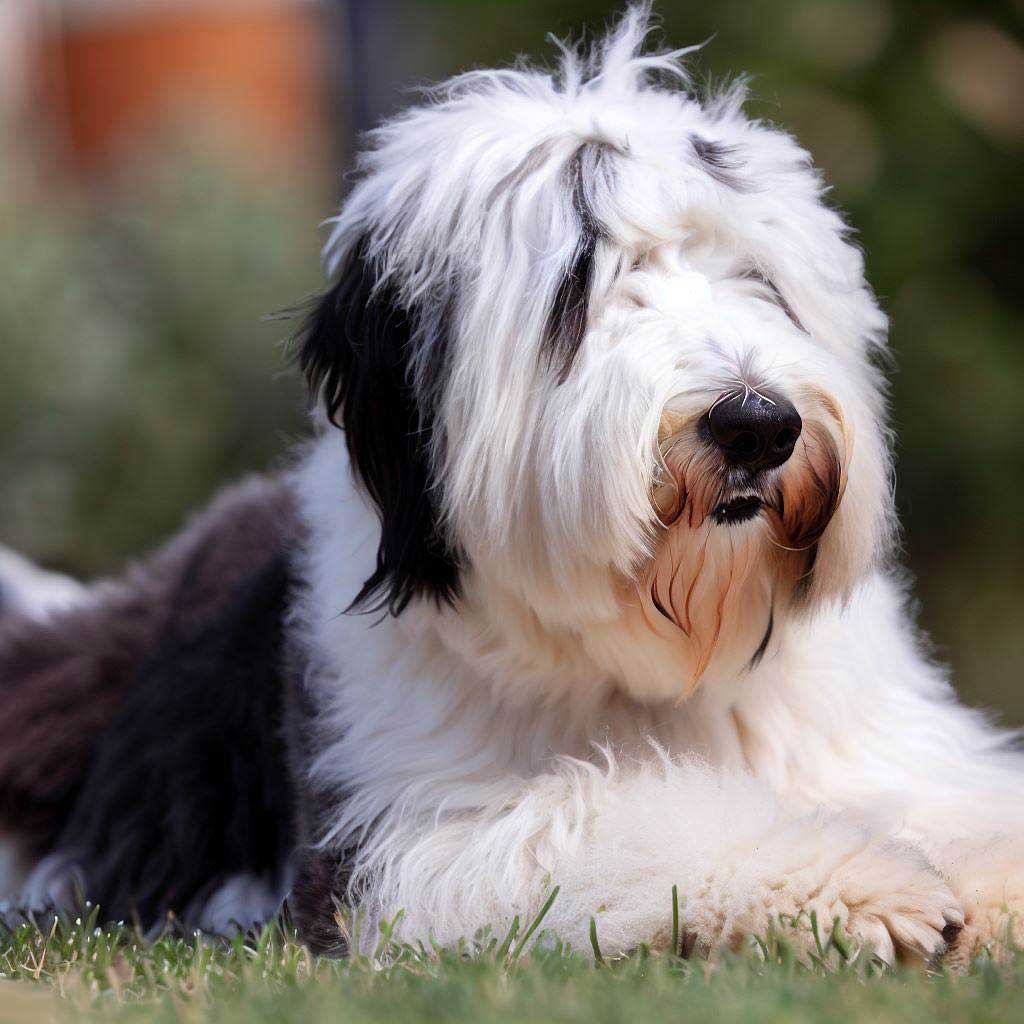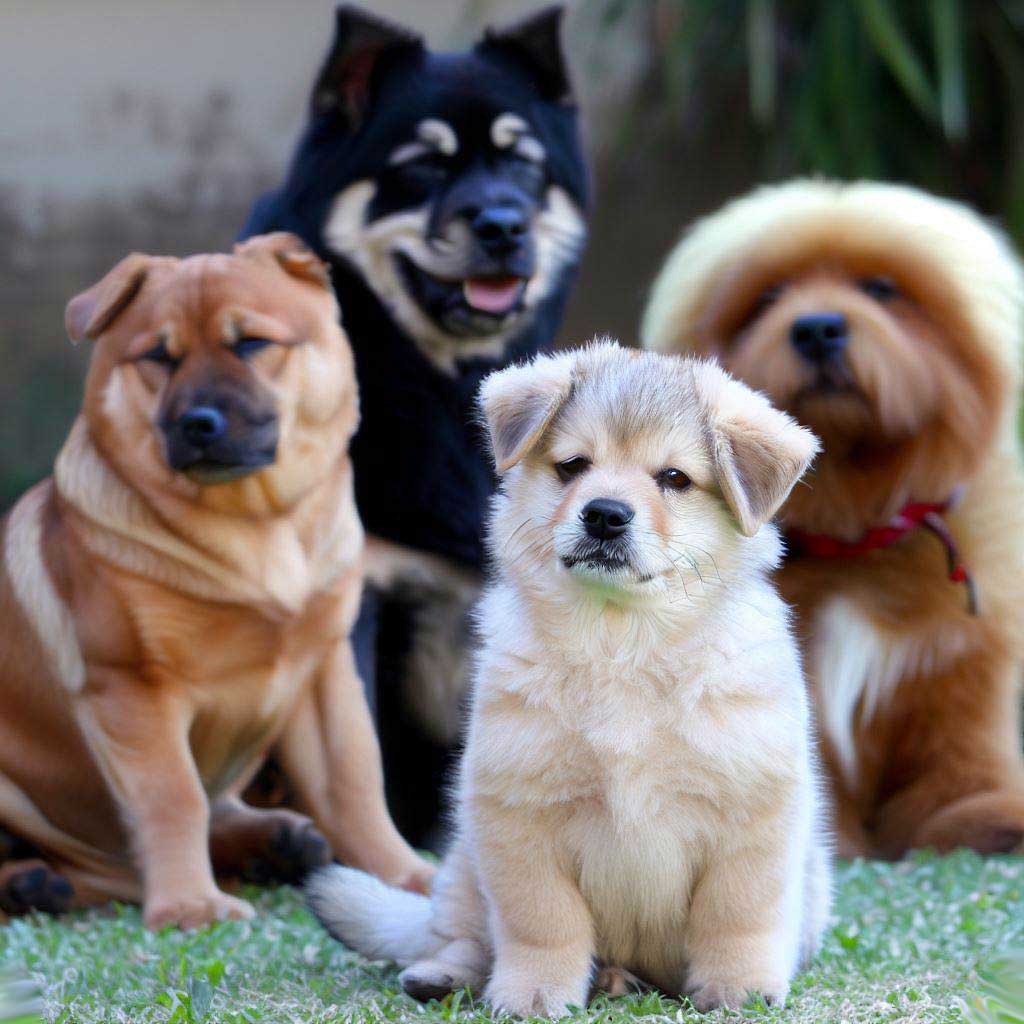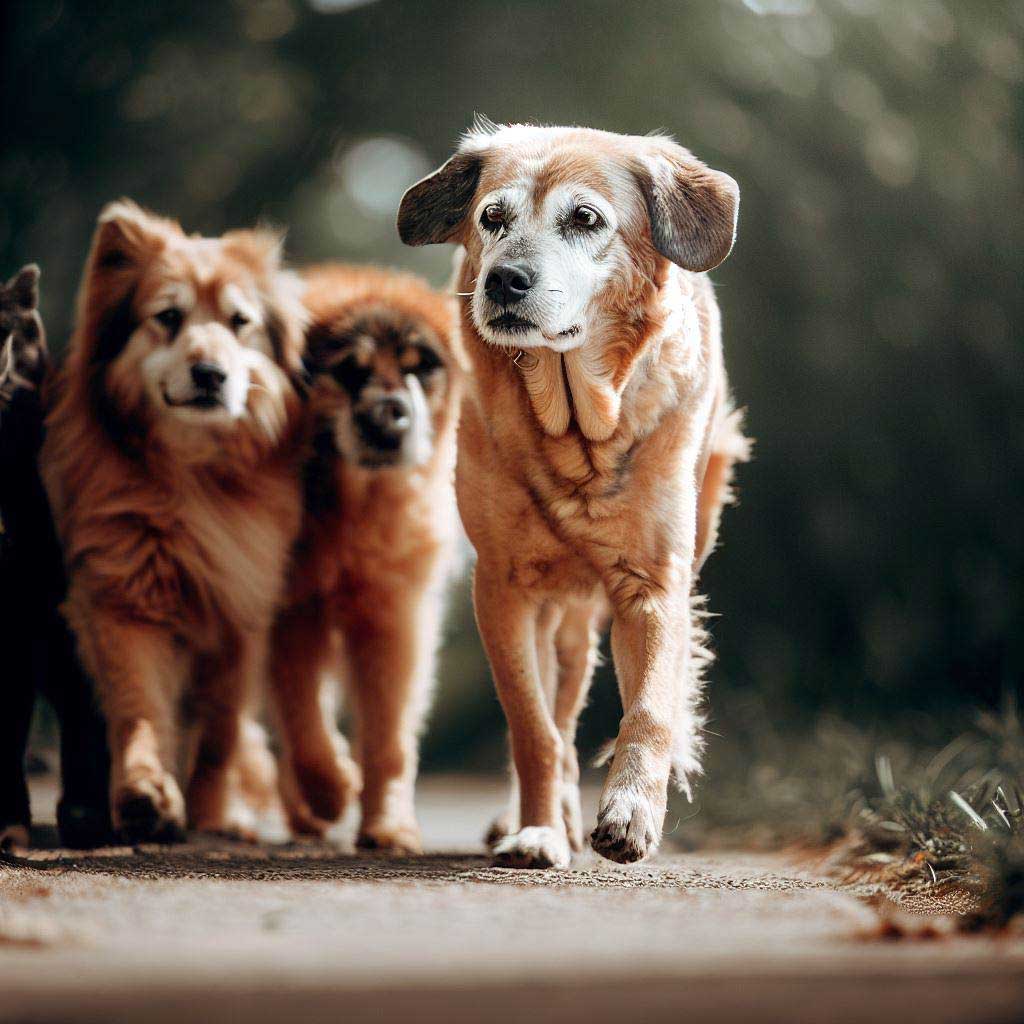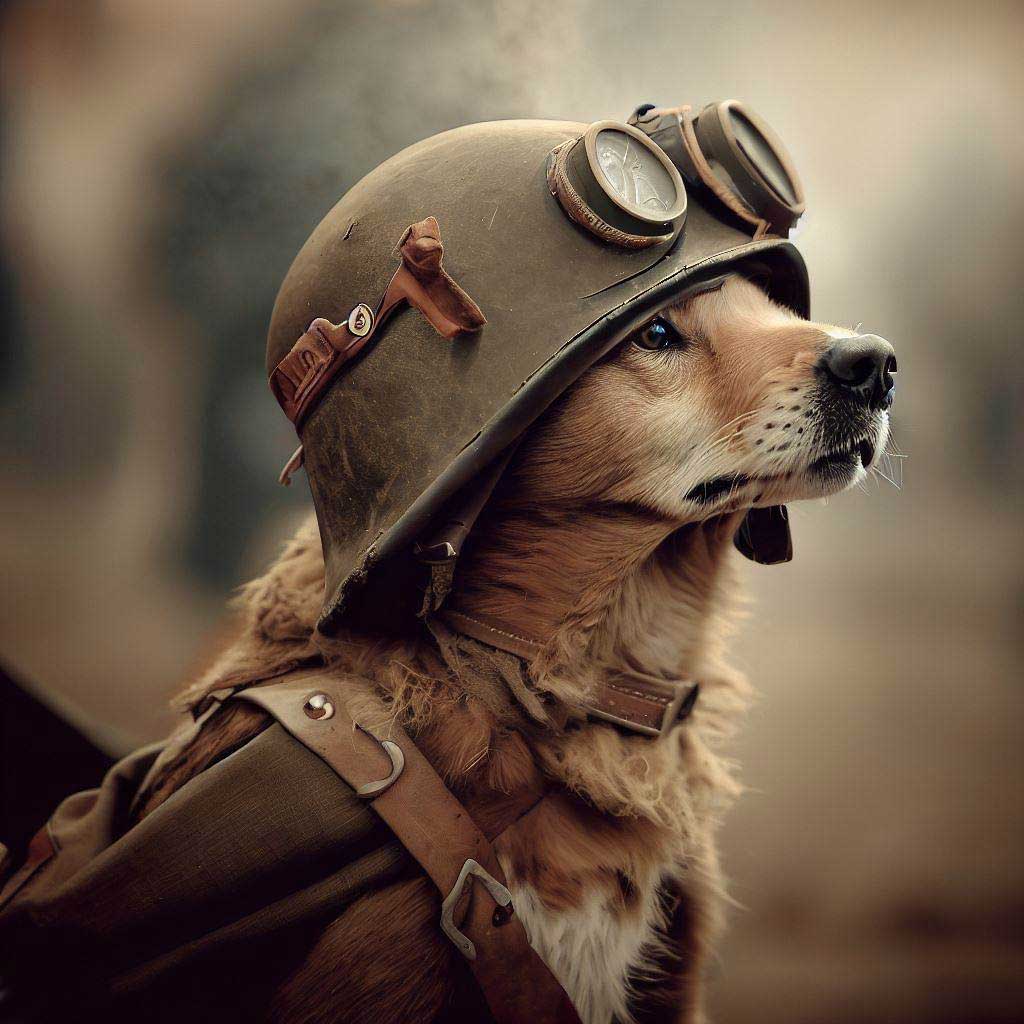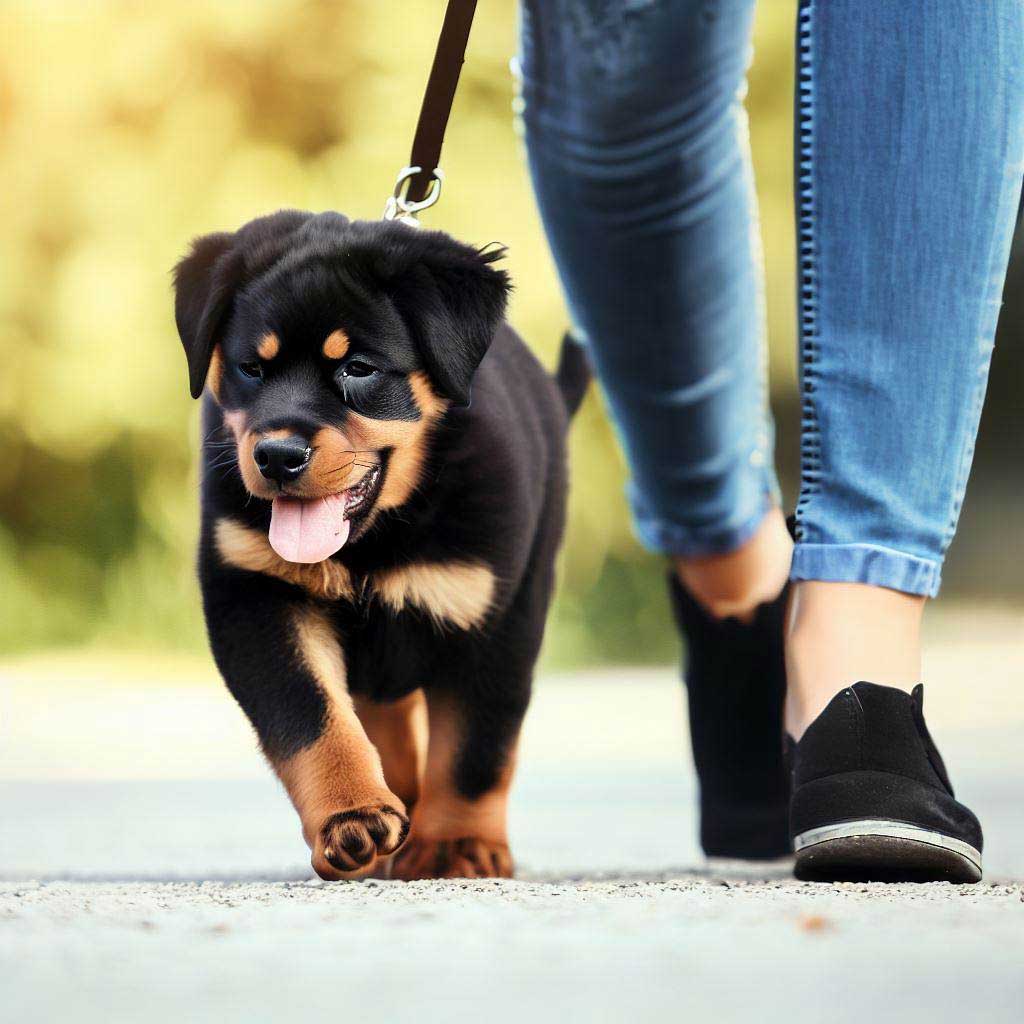Dog Behavior, Decoding the Science: The Mind Behind the Bark unlocks canine secrets. Discover why each wag, bark, and stare matters.
Table of Contents
Introduction
From the moment humans began forming bonds with dogs, training techniques have evolved. And yet, dog training isn’t just about teaching commands; it’s a delicate dance of communication, a balance between guidance and understanding. Over the years, countless methodologies have emerged, each with its unique philosophy and approach. But among them, “positive reinforcement dog training” stands as a beacon of contemporary, compassionate methods. Akin to an art, it requires finesse and patience.
Brief overview of dog training methodologies
First, let’s address the elephant in the room. Imagine a spectrum. On one end, you have the traditionalists, anchored in time-tested, dominant approaches; they believe in setting the tone and establishing “who’s boss.” They might argue, “Hey, it worked for our grandparent’s dogs, right?” And then, on the other side, there’s the ever-growing choir of voices championing positive reinforcement dog training – a method fueled by rewards, praise, and understanding the psychology behind canine behavior.
This brings us to a pivotal question: Why does the method matter?
Training isn’t merely about getting your furry friend to sit or stay. It’s about shaping their behavior, guiding them in the complexities of the human world. The right methodology forms the foundation of a lasting bond. It ensures that the dog understands, respects, and trusts its owner. Furthermore, a chosen technique can significantly impact a dog’s mental well-being, confidence, and overall demeanor. As trainers, we owe it to these loyal companions to navigate this choice diligently. After all, they’re not just pets; they’re family members.
Remember the first time your dog looked into your eyes, seeking guidance, a nod of approval, or just a simple sign of affection? That moment of vulnerability is a reminder of the profound responsibility we have. Consequently, the training methods we employ have ripple effects that transcend beyond mere obedience. They shape a dog’s worldview, teach them how to react to stimuli, and fundamentally influence their relationship with humans and other animals.
Importance of choosing the right method for your dog
Now, it’s crucial to point out that no method is universally “perfect.” Dogs, like humans, have individual personalities. What works brilliantly for one might not be as effective for another. Yet, positive reinforcement dog training, with its emphasis on building trust and mutual respect, has been gaining traction and endorsements from veterinarians, behaviorists, and professional trainers worldwide.
As you venture into the labyrinth of dog training, always circle back to one fundamental truth: Training should be as much about understanding as it is about instructing. After all, a bond formed through mutual respect and understanding is unbreakable. So, as you sift through techniques, remember to weigh the pros and cons, to think of the long-term effects on your furry friend’s psyche, and most importantly, to choose a method that strengthens the trust between you and your canine companion.
Positive reinforcement dog training isn’t just a method; it’s a philosophy. It speaks to the heart of what modern dog ownership should be: a relationship built on understanding, trust, and love. And as you embark on this journey, remember that the right training technique isn’t just about commands; it’s about building a lifetime of shared memories, understanding, and mutual respect.
Understanding our Canine Companions
Imagine, for a moment, the world from the eyes of your dog. Every whiff of air brings countless scents, every sound is a narrative, and every human gesture is a story waiting to be interpreted. The vast realm of dog behavior has always been a blend of instinct, intelligence, and emotion. Over the ages, our connection with these magnificent creatures has driven us to delve deeper into understanding their world.
The Evolution of Dog Behavior Science
Our understanding of dog behavior has witnessed a phenomenal transformation over the years. From ancient civilizations that observed dogs based on myths and superstitions, we’ve now entered an era where science attempts to decode every wag, woof, and whimper. This journey, steeped in curiosity, has revealed surprising facets about our four-legged companions.
The Science Behind Canine Thought Processes
The Anatomy of a Dog’s Brain
Let’s embark on an exploration of the canine brain, a marvel of nature. Though smaller compared to ours, it’s packed with wonders. The frontal lobe, for instance, plays a pivotal role in decision-making and problem-solving. Moreover, the limbic system, an older part of the brain, is the seat of emotions and memories.
Furthermore, dogs have a more developed olfactory bulb – the part responsible for processing smells. This is why your pet can detect a treat even before you’ve opened the packet. Every scent offers them a story, and they interpret these narratives, helping mold their reactions and, subsequently, their behavior.
Cognitive Abilities: Comparing Dogs to Other Animals
A dog’s cognitive prowess is nothing short of extraordinary. You might’ve noticed this during playful antics or those moments when they seem to ‘understand’ you. For instance, dogs have been proven to recognize human emotions. They can interpret our moods, sometimes even better than our peers, offering comfort when we’re down or sharing our excitement.
In the grand tapestry of the animal kingdom, dogs hold a unique position. While dolphins are celebrated for their intelligence and elephants for their memory, dogs have the uncanny ability to sync with humans, understanding gestures and even responding to our emotional states.


“We’ve now entered an era where science attempts to decode every wag, woof, and whimper”
The Influence of Breed on Dog Behavior
The Origins of Different Dog Breeds and Their Initial Purposes
Dogs, in all their diverse glory, come with histories as rich as human civilizations. The towering Great Dane, for instance, was once used for hunting wild boars, thanks to its strength and stamina. On the other hand, the diminutive Shih Tzu was a cherished companion in Chinese courts, revered for its beauty and elegance.
Centuries of selective breeding have, undoubtedly, influenced dog behavior. A Border Collie, for example, may not have seen a flock of sheep in its life, but give it a group of running children, and its herding instincts come alive. Similarly, the echoing howl of a Siberian Husky can be traced back to its ancestors, who communicated across vast snowy expanses.
How Genetics Play a Role in Their Behavior
Every dog breed carries a code, intricately woven strands of DNA that dictate everything from the curl of their tail to their behavioral traits. This genetic map, inherited from their ancestors, significantly influences their behavior. The protective nature of a German Shepherd, the relentless chase instinct of a Greyhound, or the alertness of a Dachshund – all these can be traced back to their genetic heritage.
However, while genetics sets the stage, it’s not the sole director of the play of dog behavior. Experiences, training, environment, and human interaction play monumental roles in shaping a dog’s behavior. This complex interplay of genes and environment ensures that every dog, even within the same breed, is unique. The way they respond to stimuli, interact with their environment, and even play is influenced by a combination of their genetic coding and life experiences.
Affects of Breeding
Now, consider for a moment the diverse roles dogs have played – from hunters to guardians, from herders to companions. These roles, historically determined by humans, required specific traits. Over generations, breeding accentuated these traits, embedding them into the genetic fabric of the breeds. Today, even if modern dogs are far removed from their ancestral roles, remnants of those traits echo in their behavior.
For instance, the Terrier group, initially bred for hunting and ridding farms of pests, is known for its tenacious spirit. That dogged determination is a direct result of generations of selective breeding to amplify the traits deemed useful for their roles.
On the flip side, understanding dog behavior isn’t just about acknowledging their past. It’s crucial to realize that every dog is a product of both its history and its immediate environment. The nurturing they receive, the training they undergo, and their daily experiences further mold their behavior. Consequently, the age-old nature versus nurture debate continues, even in the realm of dog behavior.
While we’ve made significant strides in decoding dog behavior, every dog remains a delightful enigma. Their actions, reactions, and interactions provide us with countless moments of joy, surprise, and wonder. As we continue our journey of understanding, one fact remains unequivocal: dogs, in all their behavioral complexities, are a testament to nature’s marvels.

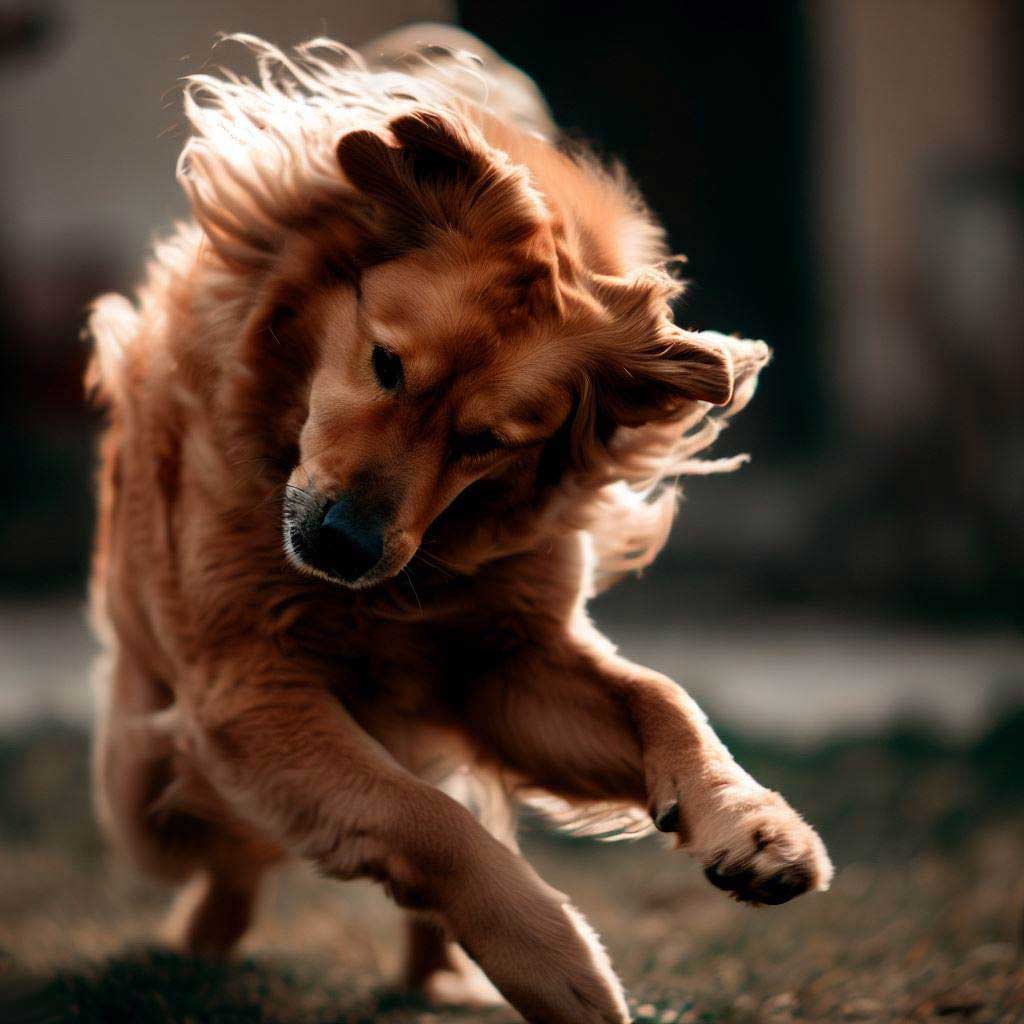
Decoding Common Dog Behaviors and Mannerisms
Every glance, wiggle, and sound from a dog is communication. It’s as if they’re speaking a complex language that we’re only just beginning to understand. The beauty of dog behavior lies in its diversity, subtlety, and depth. Let’s delve deeper into decoding some common mannerisms and behaviors.
The Tail’s Tale
One of the most dynamic expressions of dog behavior can be observed in their tails. A dog’s tail is like a mood barometer, swaying, wagging, and sometimes even tucking, all in response to various stimuli.
Wagging Patterns and Their Meanings:
Have you ever been greeted with a furious tail wag? Most times, it’s a display of sheer joy and excitement. But not always. The speed and direction of the wag can reveal so much more. For example:
- Broad Wag: Often seen as a friendly gesture, signaling that the dog doesn’t consider something a threat.
- Slow Wag: This could be a sign that a dog is insecure or is trying to understand a situation better.
- Fast Wag with Tense Muscles: Watch out! This could mean the dog feels threatened and might be on the defensive.
As you navigate the intricate world of dog behavior, you’ll realize that wagging is a nuanced language in itself. It’s not just about the tail; it’s about the entire context.
Tail Positioning as an Indicator of Mood:
The position of a dog’s tail, in combination with its movement, offers clues about its emotional state:
- Raised Tail: This often indicates alertness or excitement. In some cases, a raised tail can signal dominance or aggression.
- Lowered Tail: A sign of uncertainty or mild submissiveness.
- Tucked Tail: This is a clear indicator of fear or anxiety.
The Eyes as Windows to Their Soul
Dogs communicate extensively with their eyes. While a gaze can speak volumes, the physical appearance of the eyes also conveys critical messages.
Dilated Pupils vs. Constricted Pupils:
- Dilated Pupils: Dogs, like humans, have pupils that dilate in low light to help them see better. However, significant dilation can also be a reaction to an emotional state, often excitement, fear, or arousal. It’s crucial to read this sign in conjunction with other body language cues.
- Constricted Pupils: A dog might constrict its pupils when exposed to bright light. However, significantly constricted pupils could indicate a dog is feeling tense or possibly aggressive.
The Significance of Direct and Averted Gaze:
Understanding a dog’s gaze can provide significant insights into their intentions and feelings:
- Direct Stare: In the dog world, maintaining a direct, prolonged stare can be a sign of challenge or dominance. If an unfamiliar dog is giving you a direct gaze, it’s essential to be cautious and avoid escalating the situation.
- Averted Gaze: This is often a peace-keeping gesture. An averted gaze, especially if combined with other submissive body signals, indicates the dog is trying to avoid confrontation.
Vocalizations and Their Varieties
While dogs can’t speak our language, they’re far from silent. They use a repertoire of sounds to communicate, each with its unique significance.
Barks, Whines, Howls, and Growls: Deciphering the Differences:
- Barking: While often seen as a standard vocalization, the nuance in dog barks is astonishing. A series of rapid barks at a mid-pitch is the most typical alarm bark for intruders. On the other hand, a prolonged or continuous bark at a lower pitch suggests a threat and potential aggression.
- Whining: Whines can indicate a variety of feelings, from anxiety to submission or even excitement. It’s common for dogs to whine when they’re seeking attention or are separated from their humans.
- Howling: This vocalization connects modern dogs to their wolf ancestors. Howls can serve multiple purposes, from long-distance communication to a communal bonding activity. Some dogs also howl in response to certain sounds or sirens.
- Growling: A growl can be a warning. It’s a dog’s way of signaling discomfort or potential aggression. However, not all growls are aggressive. Play-growls are common during fun interactions and games.
Why and When Dogs Use Specific Vocalizations
Dogs use vocalizations based on their immediate environment, experiences, and sometimes, their health. A sudden increase in vocalization can indicate discomfort or medical issues. On the flip side, some dogs bark or howl out of sheer boredom. Recognizing and responding to these signals can help in strengthening the bond between humans and their canine companions.
Throughout this exploration of dog behavior, the overarching theme is clear: dogs communicate in myriad ways. The journey to understanding their unique language is filled with moments of revelation, surprise, and profound connection.

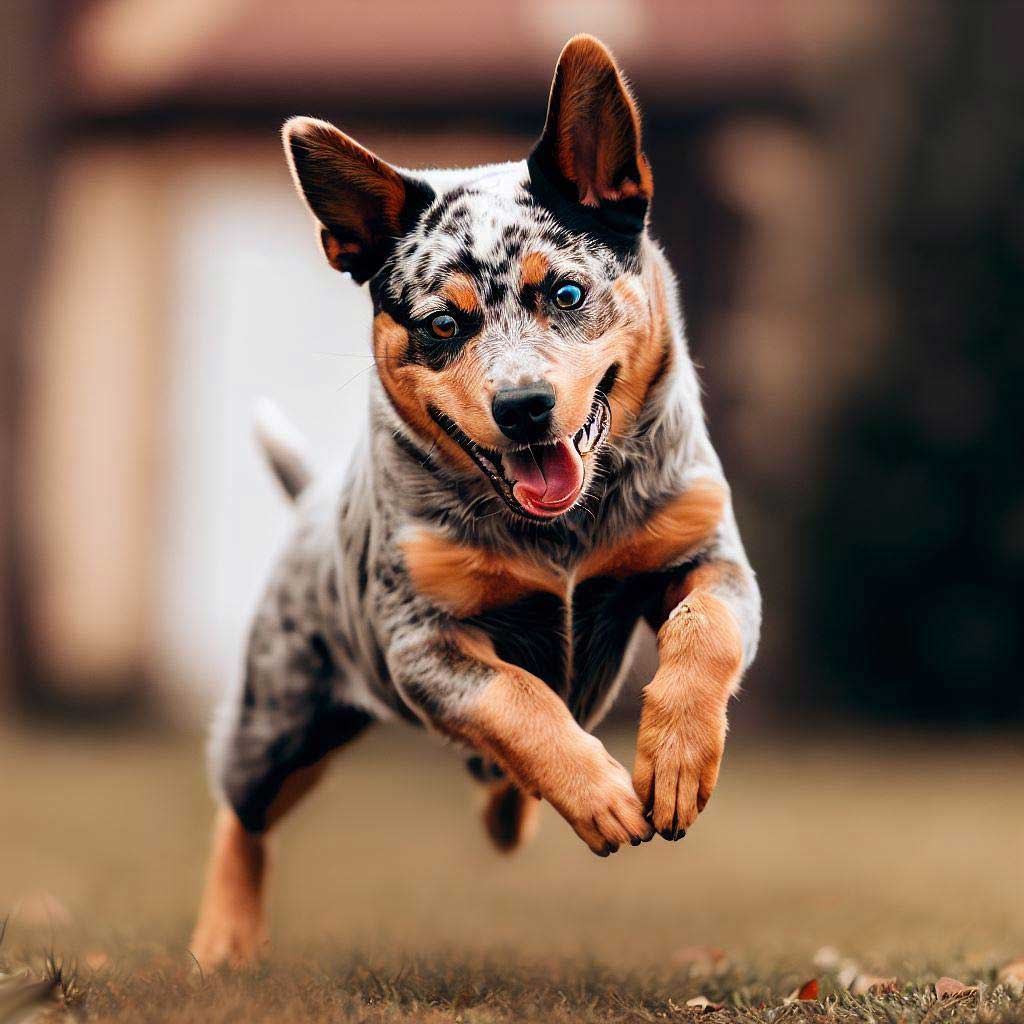
Understanding Canine Reactions
As you find yourself engrossed in the vibrant world of dogs, there’s an undeniable fact you’ll come to realize: dogs, like us, have complex reactions to their environment. A bark at the door, a whimper during thunderstorms, or an excited dash around the park; these reactions provide a window into their mind. Let’s delve deeper into understanding these multifaceted responses.
The Fear Response
Just like humans, dogs experience fear. But while we can verbalize our fears, dogs express through behavior. These behaviors, deeply rooted in instinct, have evolved over centuries to help them navigate threats.
Common Triggers and Signs of Fear in Dogs:
Numerous factors can induce fear in dogs. Some are common, while others might be unique to individual dogs. Typical triggers include loud noises (like fireworks or thunderstorms), unfamiliar people or animals, sudden movements, or unfamiliar environments.
When a dog is scared, its behavior changes. Here’s what to watch out for:
- Body Language: Tucked tail, ears laid back, and crouching or lowering of the body. Your dog might also display the ‘whale eye’ where the whites of their eyes are prominently visible.
- Vocalizations: Whining, whimpering, or even growling. It’s their way of communicating discomfort.
- Avoidance: Hiding behind furniture, seeking comfort with familiar people, or trying to escape the situation.
Recognizing these signs is crucial. After all, understanding is the first step to help them cope.
How Past Traumas Can Influence Present Reactions:
Past experiences have a lingering impact on dog behavior. A dog that’s been rescued from an abusive environment, abandoned, or even one that’s had a single traumatic experience can develop phobias or aversions.
For instance, a dog that’s been yelled at or harmed by a tall man might exhibit fear around similar-looking men. Similarly, a dog that’s been trapped in a confined space might panic in a crate or small room.
In such cases, patience is paramount. Building trust, gradual exposure, and positive reinforcement can help mitigate the impact of past traumas.
Curiosity and Exploration
Ah, the boundless curiosity of dogs! Who hasn’t seen a dog sniff around a park, explore every nook and cranny of a new house, or even curiously poke a strange object with its paw?
The Role of Smell in Dog Exploration:
The world of dogs is dominated by scents. Their sense of smell is their superpower. While we see the world, they ‘smell’ it. In fact, the part of a dog’s brain dedicated to analyzing smells is 40 times larger than ours, despite their brains being much smaller.
Imagine having the ability to smell emotions, detect illnesses, or even predict weather changes. This is the reality for dogs. When they’re sniffing around, they’re reading intricate stories, understanding their environment, marking their territory, and even communicating with other dogs.
A tree trunk isn’t just wood to them. It’s a bulletin board carrying messages from every dog that’s passed by. A fire hydrant? It’s like a local news station, offering updates from the neighborhood.
Why Dogs Are Naturally Inquisitive:
Evolution has shaped the inquisitive nature of dogs. Their ancestors, wild canines, relied on exploration and curiosity to find food, water, and avoid danger. Over time, these traits became embedded in the canine psyche.
Today, domestic dogs might not need to hunt for survival, but their inherent curiosity remains unchanged. Toys, new environments, other animals, or even a random leaf blowing in the wind can pique their interest. This natural inquisitiveness isn’t just about fun; it’s also a learning mechanism. Through exploration, dogs learn about their environment, socialize, and even establish hierarchies.
However, their inquisitiveness also demands supervision. Their exploratory nature can sometimes lead them to potential dangers like toxic foods, harmful substances, or aggressive animals. Hence, while it’s essential to encourage their curiosity, it’s equally vital to ensure it’s directed safely.
Deciphering dog behavior is like solving a captivating puzzle. Every piece, be it their reactions to fear or their boundless curiosity, adds to the bigger picture, helping us understand and connect better with these incredible creatures. Their reactions and behaviors, a blend of evolution, environment, and individual personality, continue to amaze, educate, and sometimes even perplex the best of us.


Breaking Down the Bark
Every dog owner, at some point, is bound to wonder: “Why does my dog bark so much?” or “What’s the meaning behind that particular woof?” As you embark on the captivating journey of understanding dog behavior, you’ll find that barks, much like human words, are a rich form of communication.
Barks of Warning and Alert:
Dogs, throughout history, have been guardians and protectors. Their keen senses and instincts make them excellent watchkeepers. But when they sound the alarm, how can you tell if it’s a simple alert or a more aggressive warning?
Territorial Barks vs. Alert Barks
- Territorial Barks: These are deep, prolonged, and often come in a rapid series. If a stranger approaches your house or another dog walks near their favorite park bench, a dog might exhibit territorial barking. It’s their way of saying, “This is my space, back off.” This form of dog behavior is deeply rooted in their instincts. Before domestication, wild dogs had territories they defended against intruders, and that trait has carried over.
- Alert Barks: These are usually shorter, sharper, and often higher-pitched. Let’s say a squirrel scampers across the yard or a car pulls into the driveway; your dog might give a few alert barks. It’s their way of saying, “Hey, something’s happening!” or “Someone’s here!” Unlike territorial barks, alert barks aren’t necessarily aggressive. They’re more informational, like a dog’s version of a news flash.
How Dogs Determine Threat Levels:
Ever wondered how your pet decides when to bark and when to simply observe? Dogs utilize a combination of their senses and past experiences to gauge threat levels. Their exceptional hearing can detect sounds we can’t. Furthermore, their olfactory prowess allows them to distinguish familiar scents from unfamiliar ones, thereby judging potential threats. For instance, the postman might be deemed a ‘threat’ because of his daily intrusions, leading to consistent barking. Over time, with familiarity, the barking might decrease, as the dog learns the postman poses no real threat.
Emotional Barks
Beyond warnings and alerts, dogs use their voice to convey a plethora of emotions. From sheer joy to pangs of anxiety, their vocal range is both diverse and expressive.
Joyful Barks vs. Anxious Whines:
- Joyful Barks: Imagine the scene: you’ve just gotten home after a long day, and there’s your dog, barking in sheer joy, tail wagging like mad. These barks are often higher-pitched and rhythmic. They convey excitement and happiness. Similarly, the playful barks during a game of fetch or while playing with other dogs fall into this category. It’s their way of saying, “This is fun! I’m having a blast!”
- Anxious Whines: On the other end of the emotional spectrum are the sounds of anxiety. These are typically higher-pitched whines or yelps. If a dog is left alone for long periods, it might exhibit such vocalizations, indicating separation anxiety. Another scenario is when they’re in a new, unfamiliar environment. The underlying tone of these sounds is one of unease and discomfort.
The Influence of Environment on Dog Vocalizations:
A dog’s environment plays a pivotal role in shaping its behavior. For instance, a dog raised in a noisy, chaotic environment might bark more frequently and aggressively. Conversely, a dog in a calm, consistent environment might be more measured in its vocalizations. Past experiences, training, and socialization also factor in. A dog that’s been socialized well with humans and other animals will likely bark less aggressively towards strangers or other dogs.
It’s also crucial to recognize the influence of breed and individual temperament. Some breeds are naturally more vocal, while others are quieter. Similarly, within breeds, individual dogs have their own unique personalities. Some might be more vocal, while others more reserved.
Navigating the maze of dog behavior, especially their vocalizations, can sometimes be challenging. But with a keen ear and an observant eye, you can begin to discern the subtle differences in their barks and whines. Over time, as you tune into their unique ‘language,’ you’ll find yourself forging an even deeper bond with your canine companion, understanding their needs, emotions, and reactions more than ever before.


10 Common Dog Behaviour Problems and Solutions
Navigating the world of dog behavior is akin to traversing a complex labyrinth. Just when you think you’ve understood their quirks, they throw you for a loop with a new, perplexing behavior. Drawing from decades of experience, here’s a comprehensive breakdown of ten common dog behavior problems and effective solutions to address them.
1. Excessive Barking:
Brief: Barking is a natural form of communication for dogs. But when it becomes incessant, it’s a sign of an underlying issue.
Solution: Identify the cause – boredom, anxiety, attention-seeking, or alerting. Depending on the reason, solutions can range from providing interactive toys, enforcing quiet command training, or using positive reinforcement when they’re silent.
2. Chewing:
Brief: Whether it’s your favorite shoe or the edge of your sofa, destructive chewing is a common dog behavior problem.
Solution: Offer chew toys and ensure they’re getting enough physical and mental stimulation. If the problem persists, consider deterrent sprays on items or consult with a dog behavior specialist.
3. Digging:
Brief: Your garden might be a treasure trove for your dog, but their digging escapades can wreak havoc.
Solution: Provide a dedicated digging zone in your yard, like a sandbox. If digging is due to anxiety, address the root cause through structured training or even professional assistance.
4. Aggression:
Brief: Snarls, growls, or even bites can be alarming indicators of aggressive behavior.
Solution: Identify the triggers – is it food, a particular person, or another dog? Early intervention is crucial. Socialization, obedience training, and in severe cases, seeking a dog behavior expert’s guidance can work wonders.
5. Separation Anxiety:
Brief: Whining, destructive behavior, or even self-harm can occur when a dog doesn’t want to be left alone.
Solution: Gradual training is essential. Start by leaving your dog alone for short periods, gradually increasing the duration. Ensure they have toys and comforts during your absence. In persistent cases, consider professional therapy or even medication.
6. Jumping Up:
Brief: It might be cute when they’re puppies, but fully-grown dogs jumping in excitement can be problematic.
Solution: Teach them the “Off” command. When they jump, turn your back to deny attention. Reward them when all four paws remain on the ground. Consistency is key.
7. Begging:
Brief: Those puppy eyes during dinner can be hard to resist. But giving in encourages poor dog behavior.
Solution: Train them to stay in a specific spot during mealtimes. Avoid feeding them from the table. If needed, confine them to a separate room while eating.
8. Pulling on the Leash:
Brief: Walks can become tedious tugs-of-war if your dog constantly pulls.
Solution: Implement the “stop-and-go” technique. If they pull, stop walking. Only proceed when the leash is slack. Using harnesses or head halters can also provide more control.
9. Not Coming When Called:
Brief: The ‘recall’ command is crucial, but some dogs seem to have selective hearing.
Solution: Use a long lead to practice the ‘come’ command. Reward them when they come to you. Gradually increase distractions to ensure they respond even in challenging environments.
10. Inappropriate Elimination:
Brief: Inappropriate elimination is a general term used by veterinarians to describe urination and defecation that happens where it shouldn’t. This can be frustrating and could indicate issues beyond mere behavior.
Solution: Firstly, rule out potential health problems with a vet. Ensure a consistent bathroom schedule. Clean accidents thoroughly to remove lingering scents. If the issue persists, consider behavioral training.
There you have it – a roadmap to some of the most puzzling dog behaviors out there. While the journey of understanding your dog’s quirks and nuances can be challenging, armed with the right knowledge, patience, and consistency, you can forge a harmonious bond. Remember, every dog is unique. What works for one might not work for another. But with time, love, and a sprinkle of perseverance, you’ll find that sweet spot where both you and your canine companion understand each other perfectly.


How to Read Dog Body Language
Let’s embark on a riveting journey. Imagine diving into a book written in a mysterious language, where every twitch, wag, and growl unravels another piece of the enigma. This isn’t fictional folklore; it’s the intricate tapestry of dog behavior. By observing and interpreting their body language, you’re privy to their emotions, intentions, and sometimes, even their past experiences.
1. The Tale of the Tail:
Ah, the tail! It’s more than just a furry appendage; it’s a flag of communication.
- Wagging: Often associated with happiness, but don’t be misled! The direction and speed matter. A rightward wag typically indicates positive emotions, while leftward might hint at negative feelings. Rapid wagging might showcase excitement, whereas a slow sway could signify a relaxed state.
- Raised Tail: Indicates alertness or dominance. It’s as if they’re saying, “I’ve got this!”
- Tucked Beneath: It screams discomfort, fear, or submission. A dog with its tail tucked is signaling vulnerability.
2. Ear-Witnessing Their Emotions:
Much like humans use eyebrows, dogs primarily use their ears.
- Forward-pointing Ears: Your furry friend is paying attention. Something has piqued their interest.
- Flattened Ears: This is often a sign of fear, anxiety, or submission.
- Ears Twitching: They’re trying to pick up distant sounds. It’s their version of eavesdropping.
3. The Eyes Have It:
Ever heard the saying, “Eyes are the windows to the soul”? It holds true for dogs too.
- Soft, Relaxed Eyes: Your dog is comfortable and content. These eyes radiate warmth and trust.
- Hard Stare: Be cautious. This can be a sign of impending aggression.
- Avoiding Eye Contact: It’s not rudeness! In the dog world, it’s a submissive or deferential behavior.
- Whale Eyes (showing whites of their eyes): It indicates anxiety or nervousness. They’re uneasy about something.
4. Vocal Vibes:
While vocalizations like barking or growling aren’t exactly “body” language, they’re crucial components of dog behavior.
- Barking: From alerting to potential threats to sheer boredom, barking is multifaceted.
- Growling: A warning. But remember, not all growls are aggressive. Some are playful.
- Whining: A sign of anxiety, discomfort, or desire. It’s a plea for attention.
- Yipping: Often associated with excitement or encouragement during play.
5. Postural Peculiarities:
The way a dog positions its body offers a wealth of information.
- Relaxed Posture: Just chilling! This dog is comfortable in its environment.
- Stiffened Body and Fur Standing on End: High alert. They’ve perceived something as a threat.
- Rolling Over and Exposing Belly: It’s a submissive gesture, but also a sign of trust. They’re saying, “I trust you not to hurt me.”
- Play Bow (front legs stretched out, butt in the air): They want to play! It’s an invitation for fun.
6. The Nuance of the Nose:
If you see a dog’s nose twitching and sniffing, they’re gathering information.
- Sniffing the Ground or Air: They’re decoding their surroundings. Each sniff is a chapter of a story.
- Nose Up and Forward: They’ve caught a scent and are trying to locate its source.
7. Mouth Movements and Moods:
- Open Mouth, Relaxed: All’s well in their world. They’re calm and happy.
- Lip Licking or Yawning: These can be calming signals, indicating stress or anxiety.
- Baring Teeth: A clear warning sign. It can precede a bite or aggressive behavior.
8. Paws and Play:
- Scratching: Beyond the obvious reason of itching, dogs might scratch when anxious or stressed.
- Paw Lifting: They’re unsure about a situation or are pointing towards something of interest.
- Pawing: Often an attention-seeking gesture. It’s their way of saying, “Look at me!”
9. Miscellaneous Movements:
- Shaking Off: Like they do when wet, but they’re dry. It’s a way of releasing tension or stress.
- Stretching: They might genuinely be stretching, or they’re inviting play.
10. Interactions with Other Dogs:
- Butt Sniffing: It’s a polite hello in the dog world. It’s how they get to know each other.
- Mounting or Humping: It can be dominance, play, or even stress. It’s not always sexual.
By now, you might realize that your furry companion has been “talking” to you all along. Their body, in its eloquence, has been narrating tales of excitement, fear, curiosity, and affection. The key to this rich language lies in observation and understanding. With every tilt of their head, wag of their tail, or perk of their ears, they’re reaching out, hoping you’ll understand. And with this guide, you’re one step closer to fluently speaking ‘dog.’

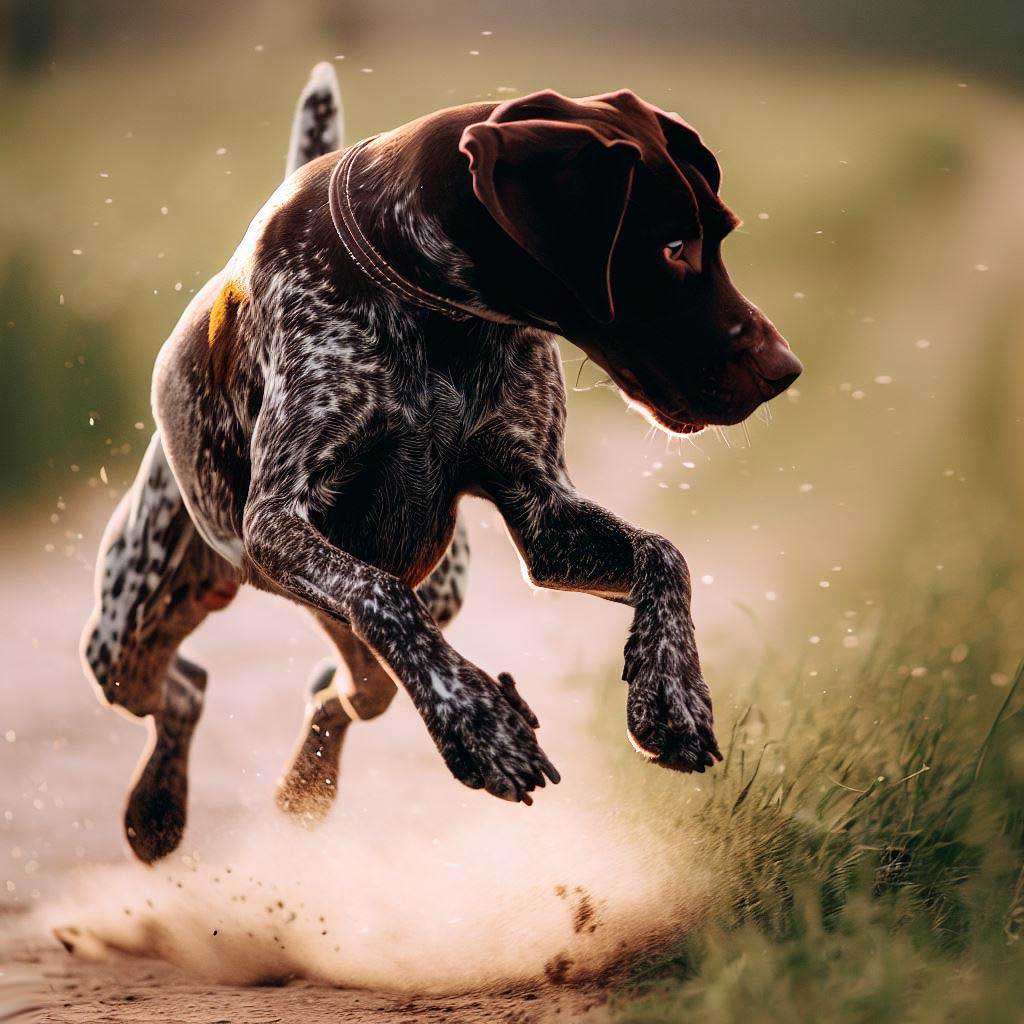
Conclusion: Decoding Dog Behavior Science: The Mind Behind the Bark
Embracing the Complexity of Dog Behavior:
Dive into the mind of a dog, and you’ll find a maze of emotions, instincts, and intelligence. These sentient beings, whom we often consider family, have intricacies in their behavior that leave even seasoned experts like myself continually intrigued. Yet, that’s the beauty of it. Just as you think you’ve mapped out every nuance, a twist awaits, challenging your perceptions and enriching your understanding of dog behavior.
Dogs aren’t just domesticated animals bred for companionship or work; they’re a blend of evolutionary wisdom, individual experiences, and the byproducts of their environment. Their behavior isn’t merely reactionary. Instead, it’s an expressive dance between genetic predispositions, learned behaviors, and immediate stimuli. While some actions might be straightforward, like the wagging of a tail in joy, others, like an unexpected growl in a seemingly calm setting, pull you into a deeper realm of canine cognition.
But why embrace this complexity? Why not just see them as loving, albeit sometimes unpredictable, pets? By acknowledging and delving into the intricate tapestry of dog behavior, we forge stronger bonds with our four-legged friends. We transition from mere observers to empathetic companions, understanding their fears, joys, curiosities, and concerns.
The Importance of Continued Learning and Observation:
The realm of dog behavior is vast, and as with any profound subject, there’s always more to learn. Just as medical professionals never stop studying human biology, anyone passionate about dogs must remain committed to expanding their understanding of canine behavior.
In a world where information is continuously updated and new research is frequently emerging, leaning into the latest dog behavior studies is paramount. It’s a realm where yesterday’s misconceptions are today’s revelations. Consider the past views on dominance in dogs, which have now been largely debunked in favor of more nuanced understandings of pack behavior and individual dynamics.
Moreover, every dog is a unique blend of personality and experience. What might be true for one canine could be an anomaly for another. Therefore, observing your dog and noting any changes in behavior is as crucial as diving into textbooks or articles. Personal observation, juxtaposed with a robust foundational knowledge, crafts a holistic understanding of your pet.
Potential Challenges
The challenges you might face in decoding dog behavior can seem overwhelming. A dog that was calm and docile might, one day, display aggression. A puppy that was house-trained might suddenly start having accidents. In these perplexing moments, it’s crucial to remember that they aren’t just being stubborn or rebellious. There’s always an underlying reason. Whether it’s a medical issue, a traumatic event, or a change in the environment, understanding the cause is the first step in addressing the behavior.
Additionally, continued learning isn’t merely an academic endeavor. It’s a journey of love and empathy. With every new discovery about dog behavior, we become better caregivers, listeners, and companions. We become more adept at ensuring our dogs lead happy, fulfilled lives, understanding their needs, and addressing their concerns.
In essence, the quest for understanding dog behavior is a dance – one that requires patience, perseverance, and passion. It’s about celebrating the joyful moments, finding solutions during challenges, and continually striving to understand the minds behind those soulful eyes and wagging tails.


FAQ Section: Decoding Dog Behavior Science: The Mind Behind the Bark
Why does my dog bark at some people but not others?
In the intricate tapestry of dog behavior, barking varies based on past experiences, socialization, and the subtle cues of human body language or scent. Remember, dogs possess an astonishing memory. Consequently, past interactions can shape their reactions. It’s essential to ensure positive socialization from puppyhood and be mindful of triggers to grasp and manage this behavior better.
Do certain dog breeds naturally have specific behavioral traits?
Absolutely, dog behavior has a significant genetic component. Take Border Collies; they instinctively display herding behaviors, while Beagles might be more prone to follow scents, given their exceptional olfactory senses. Recognizing these inherent breed tendencies is pivotal for harmonious coexistence and understanding dog behavior.
Why does my dog dig holes in the backyard?
Digging is a behavior rooted deep within canine ancestry. It could stem from hunting instincts, comfort-seeking (like creating a cool spot on a hot day), securing a place to hide their precious treasures, or sheer boredom. Engaging them in stimulating activities can often divert this digging desire elsewhere.
How can I understand if my dog’s behavior indicates pain or discomfort?
Subtle behavioral shifts often signify discomfort in dogs. Look for signs such as decreased activity, limping, unexplained aggression, or incessant licking of a particular area. Regular veterinary check-ups can proactively address and identify these underlying issues, ensuring your dog’s well-being.
Why do dogs chase their tails?
While it’s amusing to watch, tail chasing can arise from playful behavior, an itch they can’t shake, or more concerning, a sign of a behavioral or health issue. Persistent tail chasing warrants a veterinary consultation to ensure there’s no underlying medical concern.
What does it mean when my dog raises its hackles?
When your dog’s hackles rise, it’s an involuntary reaction signaling arousal, stress, or excitement. It’s similar to our goosebumps. In the canine world, it’s a clear indication of heightened alertness, often triggered by specific stimuli in their environment.
Are certain dog behaviors linked to their age or development stage?
Certainly. Just as human behavior evolves with age, so does dog behavior. Playful nipping is typical in puppies, while adolescents display a burst of independence. Senior dogs might manifest age-related behavioral shifts, necessitating an adaptive care strategy.
How can I train my dog to reduce undesirable behaviors?
The magic key is positive reinforcement. Consistently reward the behaviors you desire, gently redirect the undesirable ones, and engage in regular training sessions. For deep-seated behavioral challenges, a professional dog behaviorist might be your best ally.
Why does my dog seem to bark for no apparent reason?
Though it might seem unfounded, barking always has a trigger. Potential causes range from environmental noises, undetected threats, loneliness, to other nuanced reasons. Observing when and where the barking occurs can be illuminating, helping decipher the precise reason.
Can I change a dog’s behavior if it’s been ingrained for years?
While challenging, behavioral modification isn’t impossible in older dogs. Consistency, patience, and the right training interventions can lead to surprising behavioral shifts, even if the behaviors have been present for years.
What are common dog behaviors?
Dogs display a myriad of behaviors, with barking, digging, sniffing, playing, and tail-wagging being among the most observed. Recognizing the context and triggers for each behavior enhances our understanding, allowing us to better cater to their needs.
What are the 5 abnormal behaviors in dogs?
Abnormal dog behaviors to be watchful for include constant tail-chasing, incessant licking, unprovoked aggression, compulsive actions, and in dire cases, self-inflicted harm. These behaviors, if observed, warrant immediate attention, either through behavioral adjustments or veterinary consultation. A good resource on common behaviour issues you can read here.
What are good behaviors for a dog?
Good canine behaviors encompass obeying commands, walking serenely on a leash, engaging in non-aggressive play, and maintaining calm during interactions with humans or other animals. Positive reinforcement and early training often shape these desirable behaviors.
What do dog gestures mean?
Every canine gesture tells a story. Tail wags denote happiness, play bows are an open invitation for fun, and exposing the belly signifies trust. Observing and understanding these gestures build a bridge of communication between us and our furry friends.
What does it mean when a dog licks you?
A dog’s lick can convey multiple emotions. It could be a display of affection, an instinctual grooming behavior, or their way of exploring their surroundings. It’s a nuanced gesture, intertwining affection and curiosity.
What does it mean when a dog puts its paw on you?
The paw gesture can signal various emotions. Your dog might be seeking attention, displaying affection, or sometimes, showcasing dominance. Context is vital to decipher this multifaceted gesture accurately.
What is not normal dog behavior?
Behaviors such as unpredictable aggression, sudden withdrawal, obsessive-compulsive actions, or signs of extreme distress deviate from the standard dog behavioral spectrum. Such behaviors require immediate attention to ascertain their root causes.
What do dog expressions mean?
Expressions weave the emotional narrative of a dog. Relaxed facial features combined with a wagging tail radiate contentment, while ears drawn back and a tense posture might indicate fear or agitation. Familiarizing ourselves with these expressions unveils their emotional world.
How do dogs show anxiety?
Canine anxiety manifests through varied symptoms: excessive panting, pacing, trembling, destruction, and in acute cases, self-harm. Recognizing and addressing these signs early ensures the mental well-being of our dogs.
How do dogs say hello to you?
Dogs have a unique, heartwarming way of greeting. It could be through a jubilant tail wag, an affectionate lick, a play bow, or even gifting you their cherished toy. Every dog has its distinct style, making reunions all the more special.
How do dogs express that they love you?
Expressions of canine love are genuinely heartwarming. They might snuggle up to you, offer affectionate licks, follow you around as your shadow, or simply rest beside you, offering silent companionship. Such gestures, subtle or overt, are their way of saying, “I cherish you.”
Want to learn more about the History of Training Dogs? Check out my previous article here: History of Training Dogs
Or maybe you’d prefer to read about Traditional vs Positive Reinforcement Dog Training Methods in my next article.
More great articles about dog training from our archives:
- Importance Of Dog Training – Why Dog Obedience is Important. Discover how training shapes behavior and fosters a loving bond.
Article: Importance Of Dog Training – Why Dog Obedience is Important - What Are The 7 Commands To Train A Dog: Teach Them Right is your go-to guide for effective dog training. Learn the essential commands now!
Article: What Are The 7 Commands To Train A Dog: Teach Them Right - Dog Training Tips for Beginners: Train Your Puppy Dog Like a Pro. Expert guide to teach skills, overcome challenges, and build a strong bond.
Article: Dog Training Tips for Beginners: Train Your Puppy Dog Like a Pro - How Do You Start Training a Bad Dog | Dog Training Essentials: Unlock tried-and-true methods to shape better behaviors in any breed.
Article: How Do You Start Training a Bad Dog | Dog Training Essentials - Discover what are the 5 golden rules of dog training and transform your pup’s behavior. Master effective training with these proven tips!
Article: The 5 Golden Rules Of Dog Training - The 17 Best Companion Dogs That Make Great Pets: Explore 17 top breeds perfect for companionship, cuddling, and more. Find your ideal lifelong furry friend today!
Article: The 17 Best Companion Dogs That Make Great Pets - Is it Too Late to Train My Dog: Puppy and Dog Training Guide. Learn why age isn’t a barrier and how to train older dogs effectively.
Article: Is it Too Late to Train My Dog: Puppy and Dog Training Guide
